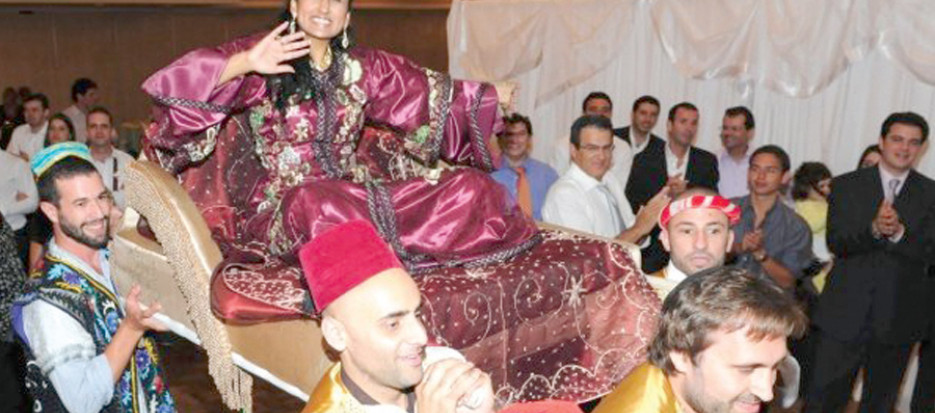
This is a special Heritage Tour in the footsteps of ancestral Jews of Morocco. This Morocco cultural and historical tour is focused on the diversity of Moroccan Jews and their millennium history and contributions to the makeup of the Moroccan Culture. You can take as a Hilula also as just a cultural discovery of Morocco's ancient history with a focus on Jewish heritage.
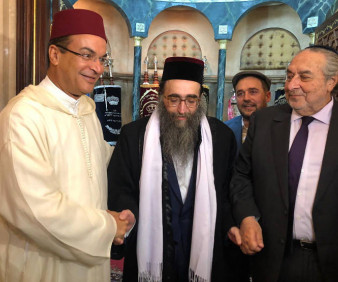
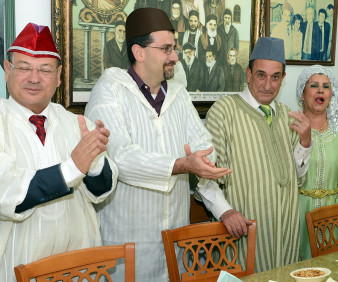
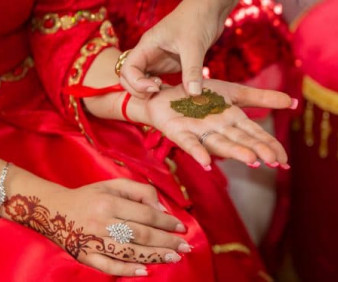
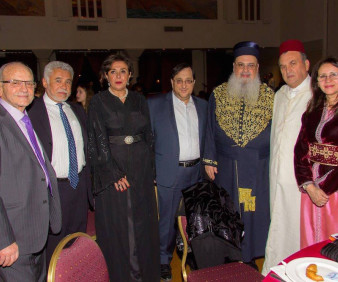
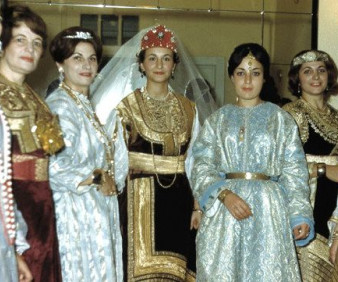
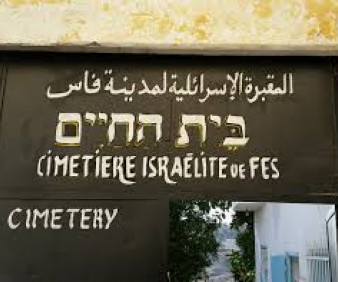
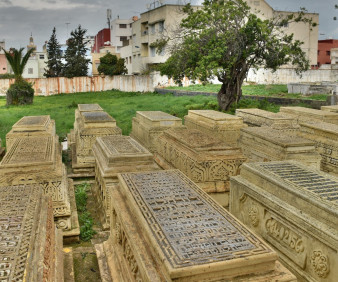
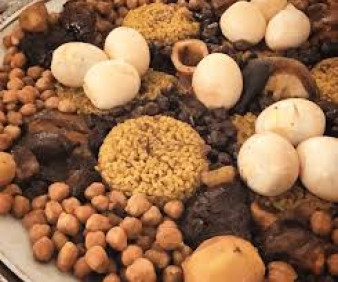

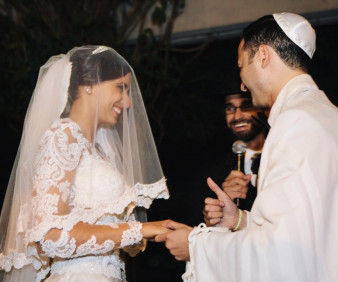
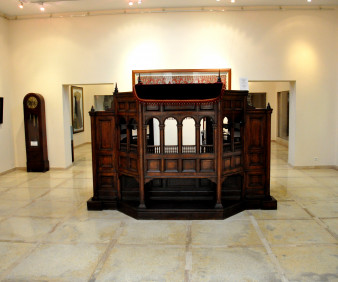
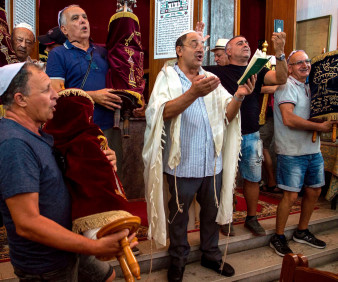
The first Jews migrated to Morocco after the destruction of the First Temple in Jerusalem and settled among the Berbers of Morocco. Later in time, the settled Jewish community in Morocco was later met by a second wave of migration from the Iberian peninsula in the period immediately preceding and following the 1492 Alhambra Decree, when the Jews were expelled from Spain and Portugal. This second immigration of Moorish Jews wave deeply modified Moroccan Jewry, who largely embraced the Andalusian Sephardic liturgy, making the Moroccan Jews switch to a mostly Sephardic identity. At its peak in the 1940s, Morocco's Jewish population exceeded 450,000. Today, there is a vibrant Jewish community in Morocco which counts approximately 2,500-3,500 Jews, while in Israel, Moroccan Jews constitute the second-largest Jewish community (approximately 1 million), after the Russian Jews, and where they constitute the third largest Moroccan diaspora after France and Spain. Moroccan Jews and their descendants can now be found primarily in Israel, France, Canada, Spain, the United States, and Venezuela. Welcome to the best Morocco tours. This tour is a great introduction to the diverse landscapes that Morocco has to offer through walking, hiking, camping over the dunes in the Sahara Desert, as well as stays in deluxe hotels and riads Morocco has to offer. It is indeed a Hilula in the footsteps of a trail of Moroccan history of over 3000 years featured in this tour to Morocco and other trips. Learn about Judaism and the Berber then Sephardic practices in Morocco, at the mean time, pay homage to Jewish saints and eminent Rabbis who marked history and the Moroccan intellect as a whole. This Morocco trip features remnants of a Jewish Berber Heritage that existed since the dawn of time are still standing to witness the making of Moroccan society in rural areas as well as urban metropolises all throughout Morocco. Enjoy this wonderfully hand-picked Morocco historic and cultural tour traveling back in time to trace the rich history of Moroccan Jews. We are proud of them as Moroccans more than any Moroccan and will always be Moroccan Nationalists wherever they are. Their Jewry and Moroccanery run in their blood. You will start your Morocco Jewish Heritage tour in Casablanca traveling to Rabat, across the great farming plains. From there, you will travel through the pastured hills to Fez. From Fez, start climbing towards the peaks of the evergreen middle Atlas Mountains covered with the unique red cedar forest home to lots of Berber tribes. The landscape and architecture are so un-Moroccan that you might feel almost in the Alps of Switzerland. Welcome to Morocco Jewish Heritage tours and retreats.
Upon your arrival at Casablanca airport you will find your host waiting for you to greet you then later take you to your hotel in Rabat. You will depart for Rabat, the capital of Morocco. This is a wonderful short drive of about 45 miles through the lash farms and nurseries of all kind of flowers and exotic plants you will reach Rabat. Styled in a spaciously elegant European grid, yet slightly self-conscious of its modernity, Rabat and its twin city Sala Colonia separated by only a river but historically worlds apart have an ancient legacy that spans hundreds of generations. Each civilization that has inhabited each of the cities has left its mark, resulting in a wide variety of architectural styles including those from the Phoenician and Roman eras. You will spend your day discovering the delights that Rabat has to offer. Just outside the city walls of Rabat is another walled city, the Chellah, where Jews are believed to have lived during the time of the Phoenicians. Rabat's Archeological Museum has a strong focus on the Roman town of Volubilis and displays a Jewish lamp found at the site. The unfinished Tour Hassan Mosque is the counterpart of Marrakesh's Koutoubia Mosque and the Giralda Cathedral in Seville, Spain, all of which were built by the Almohad Dynasty, the twelfth-century persecutors of the Jewish people. Adjoining the Tour Hassan is the Mausoleum of King Mohammed V, which has become a pilgrimage site for Jews, who cannot forget his efforts to defend them against the anti-Semitic policies of the French Vichy Government. The near-by Mellah has a beautiful synagogue just inside its gates, while the main synagogue is found a few blocks onward in the New City. The Oudaias Kasbah was the home of the Sale pirates, some of whom were Portuguese Marranos. The Oudaias Museum has a display of traditional Moroccan clothing, including a Jewish wedding costume. Rabat's Jewish cemetery has tombstones with inscriptions in Hebrew, French, and Spanish. Important saints include Eliezer de Avila and Chalom Zaoui. A few kilometers north of Rabat, a new Jewish museum has opened, near the Plage des Nations
You will travel to Meknes on an excursion that embodies a large part of Morocco's early history. First, you will travel through the Zaer confederation where fertile and large-scale farms and vineyards are in abundance than of course the Zemmour Berber tribes starting at the town of Tiflet for colorful Moroccan hats a sign of wealth among farming communities. East in the niter land we will reach the hills of Zemmour starting at Khemisset a city now for its exquisite Kilims. You will proceed on to Meknes a city that has been created in the first place to rival Fez but not quite. It is what Moroccans call the Versailles of Morocco. Meknes is one of the only cities in Morocco where the Mellah does not adjoin the royal palace. It is also the only city where Jews decided to create a new Mellah after the French Protectorate was installed. The European city houses several synagogues as well as a community center. The new Mellah is still the home for some of Meknes's 200 Jews, and one can visit a beautiful synagogue, the El Krief, nearby the new cemetery. On the other side of the new Mellah is the old Jewish cemetery. Several saints are found in the two cemeteries, including Haim Messas, David Boussidan, and Raphael Berdugo North of Meknes is Volubilis, a well-preserved Roman city, where archaeologists found the first traces of Jewish settlement in Morocco. The nearby town of Moulay Idriss contains a mausoleum commemorating the founder of the first Muslim state in Morocco, Idriss I, who oppressed the Jews, forcing many of them to convert. Further North is Ouezzane, a town controlled by an important Muslim fraternity who encouraged Jewish traders and agriculturists to live near-by. East of Ouezzane is the village of Azjen, where the tomb of the most important Jewish saint, Amram Ben Diwane, is found. The Lag B'Omer pilgrimages to his grave attract hundreds of Jews from both inside and beyond Morocco. Later in the afternoon we will cross the hills of Zgotta, and continue onward to Fez where you will be provided with dinner and accommodations at your hotel.
Visiting Fez is like traveling back in time. Undeniably fascinating, Fez stimulates the senses with its haunting yet beautiful sounds, visual splendor, and evocative smells. The most ancient of imperial capitals and the most complete medieval city of the Islamic world, Fez is reminiscent of a city suspended in time, unfazed by the constantly evolving world outsides its walls, owing nothing to the Western world save electricity. Time spent in Fez will reveal much about the sophistication of the Moroccan artisan, providing an unparalleled learning experience to those who cross its path. Your morning will be spent visiting the Medina. In contrast with the young Mellah Quarter in Casablanca, the Mellah of Fez is over 650 years old. This picturesque neighborhood adjoins the royal palace, noted for its recently constructed bright brass doors. Jews took shelter in this palace during the 1912 pogrom. The nearby cemetery contains the tombs of more Jewish saints than any other cemetery in Morocco. One of the more important saints is Lalla Soulika. This woman was born in Tangier in 1817. Throughout the old city of Fez, there are traces of ancient Jewish life, including the home of Maimonides, who lived in the city from 1159-1165. In the face of a declining population, the Jewish community of Fez is working hard to maintain its community spirit and preserve its heritage and traditions. The Center was created in the early 1980s in a building housing a Talmud Torah synagogue and school. Nearby the community center is Roben Ben Sadoun Synagogue. Built-in the 1920s, it is decorated with exquisite plaster carving reminiscent of the decoration of traditional mosques and madrasas. It is large by the standards of Morocco, where every rich Jewish family desired its own synagogue.
Sefrou, south of Fez, was known as Little Jerusalem due to its high percentage of Jews and its well-developed religious life. Upon Morocco's independence, a rabbi from Sefrou was elected to Parliament. Sefrou's Mallah makes up half of the old city. Jews made up almost half the population. While there were no more than 5000 Jews in Sefrou in 1948, they lived only in the Mallah. To cope with the high population density, most buildings have three stories, with balconies facing the street. Sefrou's main Jewish cemetery is being restored using funds from those who have emigrated. Historic headstones have been mounted within cement monuments. Several monuments commemorate a large number of merchants who died in a truck accident on the road south of the Tafilalet region. Others honor the 21 victims of the flood of 1950. Sefrou has several saints, including Moshe Elbaz, the Masters of the Cave, Eliaho
You will spend most of your day en route to Marrakesh, exploring Berber villages and natural sites in the Atlas Mountains. You will arrive in Marrakech, a city of pleasure for both visitors and locals, where southern tribesmen and Berber villagers bring their goods to market and find a variety of entertainment. To tourists, the city is a feast for the imagination, full of incomparable beauty, situated before the towering mountains that provide a thrilling backdrop. Dinner and accommodation will be at the hotel
Your day will be devoted to discovering the historic sites of Marrakech with your excellent guide. The Marrakesh mellah dates from 1550, as noted on the door to the Jewish cemetery. Unlike the Moslem old city or medina, the mellah has many three-story buildings towering over narrow streets, reflecting the crowded conditions of the many Jews who lived there until the 1960s. Synagogues were once found on every street, but only a few remain in operation. In the middle of the mellah is a building that housed until recently a synagogue and a home for the elderly. Another synagogue is across from the jewelers market, where several Jewish goldsmiths still produce pendants of the hand of Fatima, which is a symbol of good luck to both Jews and Muslims. The Marrakesh cemetery is the site of the Jewish saint Hanania Cohen.
In the 1950s, Jewish economic activity spilled out of the mellah into the medina heading toward the Jemaa El Fnaa Square. The Square is Marrakesh's center of traditional entertainment in the evening, with acrobats, storytellers, and snake charmers performing for thousands of people. Nearby is the Koutoubia mosque, one of the major architectural triumphs of the Almohads. The eleventh-century Almoravide Koubba el Baroudiyn is one of the few architectural reminders of the dynasty that presided over the Golden Age of the Jews in Spain and Morocco. The Medersa Ben Yusuf, El Badi Palace, and Saadian tombs are beautiful demonstrations of the art and architecture of the 16th century Saadians, a dynasty that relied heavily on Jewish traders with Sub-Saharan Africa, including Moroccan-controlled Timbuktu, to finance its wars against Portugal and the Turkish empire.
The rural areas surrounding Marrakesh have the heaviest concentration of Jewish saints anywhere in Morocco. Demnate Town, northeast of Marrakesh, is one of the few rural towns with a well-developed mellah, as well as a cemetery with the saint David Draa Halevy. Near-by Sidi Rahal has the mausoleum of Jacob Nahmias, called Moul Almay.
You will begin your day with an excursion to the Ourika Valley, where you will visit the traditional Berber Souks, as well as the Jewish shrines. After lunch, you will discover the workshops of the local artisans, enjoying their sophisticated, hand-made products. Aghbalou in the Ourika Valley, the tomb of Saloman Ben Elhans is cared for by one of the few remaining Berber Jews in Morocco. Return To Marrakech for a Jewish dinner in a kosher restaurant with local entertainment.
You will begin your day by traveling to Essaouira (Mogador), a picturesque city with a rich history. With fascinating antiquity, Essaouira was occupied by the Phoenicians and Carthaginians, supplied essential purple dyes to the Romans, absorbed the sophisticated Jewish arts of silversmith, and spent centuries as a Portuguese enclave. Despite the obvious influence of these civilizations, Essaouira has managed to remain a small, authentic Berber town. Alive with the breath of fresh air provided by the Atlantic, Essaouira is a jewel nestled in the rugged coast, with a vast expanse of empty sands trailing back along the promontory towards the South. Essaouira mellah covers over 10 percent of the town, but Jews constituted almost 40 percent of the population in the late 1880s. Jewish stars on the doors to the mellah show the degree to which Jews were accepted in Essaouira, to the point that some of the richer Jews did not even live in the mellah. Commemorative plaques indicate the buildings in which synagogues were located. Former inhabitants of Essaouira, most of them Jewish, formed a committee to rehabilitate the town. An important member of the committee is King Hassan II's Economic Advisor, Andre Azoulay. The Jewish cemetery, just outside the city gates, is extremely well-kept. After an introductory tour, you will return to your hotel for dinner.
You will travel to Casablanca, stopping at El Oualidia for a seafood lunch. You will continue onward to El Jadida, where you will visit the citadel, evidence of the 11th-century Portuguese occupation. Finally, you will arrive in Casablanca, having completed a journey that has led you through immeasurable antiquity. In El Jadida, south of Casablanca, the 18th-century Portuguese citadel later served as the Jewish quarter. It is possible to climb the bastions, where a star of David can be seen on an abandoned synagogue, which was converted from a Portuguese courthouse. Next to the Portuguese city is a large Jewish cemetery. The tombstones of Jewish translators and employees of foreign consuls demonstrate the Jewish role in 19th-century trade with Europe. The saint Yahia Assouline is buried in this cemetery. You will conclude your day with dinner and spend the night at the Hotel.
The Mellah of Casablanca is young by Moroccan standards, not much more than a century old. It assaults the senses in the evening, with a sea of women in brightly colored djellabahs carrying and selling fruit and vegetables throughout the cramped, narrow streets. While Jews no longer live in the mellah, kosher butchers are found in the old market, next to other butchers selling horse meat. The Jewish cemetery in the mellah is open and quiet, with well kept white stone markers in French, Hebrew, and Spanish. Once a year, Casablanca Jews celebrate a hill, or prayer festival, at the tomb of the Jewish saint, Eliahou.
The 4500 Casablanca Jews live outside the mellah in the European city, where they worship in over 30 synagogues, eat in kosher restaurants, entertain themselves in community centers, and attend Jewish schools and social service centers. Beth El is the largest synagogue and an important community center, seating 500 persons. Do not miss to visit the Hassan II Mosque, the second largest in the world. The Jewish community contributed to the construction of this mosque, which was inaugurated in 1994. Some Jews visit annually the Muslim shrine of Sidi Belyout, Casablanca patron saint. Many Jews of Casablanca celebrate the Hiloula of the saint Yahia Lakhdar in Ben Ahmed, about an hour south of Casablanca near the town of Settat. Some of you can go and have dinner with a Moroccan Jewish family at home.
You will depart for Casablanca Airport in the morning where you will board your flight back home with a lifetime worth of memories packed neatly into your suitcase.
| DEPARTING | FINISHING | SEATS | TOTAL IN USD |
|---|
Cost per person: $2485 USD
Single supplement: $350 USD
All of our tours can be customized for private travel according to your preferences and dates. Click below to tell us what you're looking for:
Plan my Trip